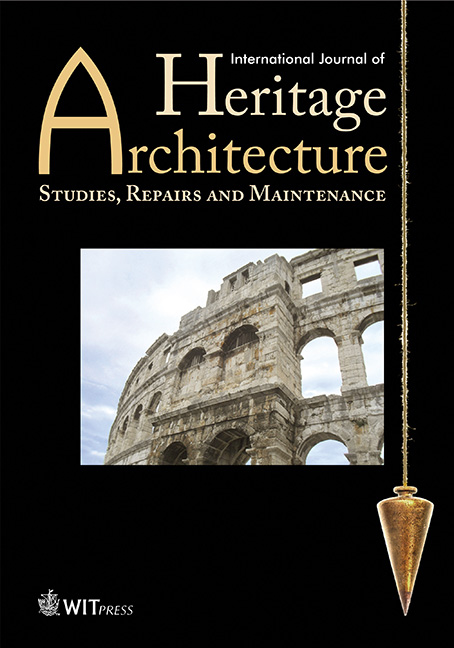IMPACT OF TRAFFIC VIBRATION ON THE TEMPLE OF MINERVA MEDICA, ROME: PRELIMINARY STUDY WITHIN THE CO.B.RA. PROJECT
Price
Free (open access)
Volume
Volume 2 (2018), Issue 1
Pages
12
Page Range
102 - 114
Paper DOI
10.2495/HA-V2-N1-102-114
Copyright
WIT Press
Author(s)
IVAN ROSELLI, VINCENZO FIORITI, IRENE BELLAGAMBA, MARIALUISA MONGELLI, ANGELO TATÌ, MARIAROSARIA BARBERA, MARINA MAGNANI CIANETTI & GERARDO DE CANIO
Abstract
The impact of long-term traffic vibration on ancient structures located in the city centre of big cities is an important issue, as it represents the main factor of fatigue, possibly causing structural damage in historic constructions. This article illustrates the preliminary results of a study on the so-called Temple of Minerva Medica in Rome, Italy, conducted within the CO.B.RA. project, which focuses on the development of advanced technologies and methods for the conservation of cultural heritage assets. The studied monument, which is part of the architectural heritage of ancient Rome, is located very close to several railway tracks just out of the Termini train station, on the north-east side, and to urban tramways, on the west side.
To obtain indications on the dynamic behaviour of the structure and to map the base excitation induced by passing trains and trams, ambient vibration data were acquired by digital recorders with triaxial velocimeters positioned at several measurement points on the ground, around and inside the structure, and at different heights on the north-west façade. For evaluating the structural vulnerability, three-dimensional (3D) architectural surveys and non-destructive investigations on the material properties of the monument were conducted in order to implement a finite element model of the building to be used for structural analyses and dynamic simulations. In particular, to the purpose of obtaining a detailed 3D model, laser scanner and stereo-photogrammetric acquisitions were carried out. Photographic acquisitions were also used to identify the crack pattern and to document the current state of damage. Vibration and 3D reconstruction data were acquired both in summer and in winter, along with thermographic images, for assessing the seasonal effects on the structural behaviour. All collected data were stored into an ad hoc friendly data repository accessible through the internet by the accredited project end-users.
Keywords
3D reconstruction, ancient Roman masonry, dynamic identification, non-destructive tests, traffic vibration




